Jeep Grand Wagoneer Vs Cadillac Escalade Comparison

If you want the pinnacle of American luxury, you want a full-size SUV.
In a way, it always made sense: America’s primary contribution to the modern motoring landscape is the truck. Dress it up all fancy-like, and you’ve got the Lincoln Blackwood—er, Navigator, which stormed the scene in 1997. Cadillac quickly followed suit with the Escalade. Since then, both have become staples of the segment, trading on those big, brash looks, tow-anything attitudes, and ample space.
Get a Quote on a New Jeep Grand Wagoneer or Cadillac EscaladeAnd then there was Jeep. America’s off-roader brand was well placed to bank on the public’s love affair with SUVs this millennium. But outside of an ungainly (and mercifully short-lived) Commander, it didn’t have anything to tackle the burgeoning three-row sector. Jeep’s 2021 solution was two-pronged: the unibody-based Grand Cherokee L to capture crossover shoppers, and larger, more robust Wagoneer sitting on a modified pickup platform. At the top of the pile is the Grand Wagoneer, an ultra-lux land yacht that has obviously studied the playbooks at Lincoln and Cadillac.
Whether the market responds well to the idea of a six-figure Jeep is one thing—even if the four-letter word is nowhere to be found on the GW’s extensive exterior bodywork. We wanted to know how the product stacked up, so we spent a week together with a loaded Grand Wagoneer and the latest, Super Cruise-equipped Cadillac Escalade.
Interior and Cargo Space
Grand Wagoneer: There aren’t many press cars I’d rather sit in than my own home office, but the Escalade is one of them. This is a striking, gorgeous interior, awash in buttery-smooth leather and impressive planks of wood. The level of brightwork is just right too, with classy two-tone highlights in the vents. The latest Grand Cherokee was a sign that Jeep was looking to move upmarket, and the Grand Wagoneer’s interior is the confirmation that yes, it’s happened. It’s the little details that really sell the experience: the subtle ambient lighting, the raised leather starter button, the substantial real-metal shift knob, the leather quilting. Jeep has knocked it out of the park here. Storage cubbies are plentiful, with large door pockets and a spacious center console, complete with chilling capability.
The seats keep the hype up, too. Mega comfortable and super adjustable, it’s easy to find the right view out over that massive hood. The second row is pretty swanky too, with its own console, complete with infotainment screen. Heading to the way-back could be better, as the seats will angle and slide forward, but not fold while doing so a la Caddy. Once back there, however, the Grand Wagoneer’s third row is adult-friendly. The moonroof helps it feel more airy, too.
In every measure bar front headroom and legroom, the Grand Wagoneer holds the advantage. Even in the back, you’re looking at 34.9 inches (886 mm) of legroom, and 38.2 inches (970 mm) of headroom. If you’d prefer, an eight-seat layout is available at no extra cost.
The Jeep initially holds the cargo advantage, with 27.4 cubic feet (776 liters) of wide, flat space behind the third row. Drop the way-backs flat and that figure shoots up to 70.9 cubes (2,008 L). It’s only 94.2 cubic feet (2,667 L) when running in two-seat form, however, thanks to that chunky second-row console. That also limits how large long items can be. Maximum towing capacity is rated at 8,260 lb (3,747 kg).
Escalade: The Escalade’s interior gets an early “wow” thanks to its achingly cool single-piece curved display. Comprising three screens—7.2, 14.2, and 16.9 inches, from left of the wheel to right—it’s a techy, minimalist look that feels oh-so right for Cadillac right now. Similarly, the center console keeps ornamentation to a minimum; same with the door panels. The relentless blackness of it all robs the Escalade’s interior of a true premium feel, however, since the detailing is so hard to make out. The center console’s cheap plastic feels unbecoming of a six-figure car, too.
To Cadillac’s credit, the Escalade features more useful interior storage solutions, from the door pockets to the center console shelf.
Like the Jeep’s front thrones, the Caddy’s chairs are wide and umpteen-way adjustable. They’re ever so slightly less supportive however, and the massage feature isn’t as impressive. The second-row bench is very comfortable, and the outboard seats can easily fold up and forward to maximize access space to the third row. There’s a little less space in all directions back here—and dark, without a sunroof—but you should be able to cram three adults in without complaint.
The Cadillac gives up an inch here and there for pretty much all measurements. It does boast the most front headroom (42.3 in / 1,074 mm) and legroom (44.5 in / 1,130 mm), however.
The other area the Cadillac holds an advantage is cargo space. Not with all seats up, mind: that’s 25.5 cubes (722 L), slightly worse than the Jeep. But fold the rear-most seats down and that’s 72.9 cu-ft (2,064 L); go for both fold-flat rows and it’s a cavernous (3,426 L). The Escalade also lets you open just the rear tailgate glass, which can help when lugging longer items. Maximum towing capacity is 7,500 lb (3,402 kg).
SEE ALSO: 2021 Lincoln Navigator Review: Wedding Chariot of ChoiceBottom Line: Need to regularly haul big pieces of furniture in your swanky, leather-lined SUV? The Cadillac is better suited to that task. In every other way, we preferred the Grand Wagoneer, which features better materials, a more spacious interior for occupants, and the better front-row seats.
Tech and Features
Grand Wagoneer: There are seven—seven!—screens within this here Grand Wagoneer. All in, there’s 45 inches of the things, which is barely less than the TV in my living room. Stellantis’ excellent Uconnect 5 runs the whole show, a slick user interface that’s as good looking as it is easy to use. The screen ahead of the driver features a whole bunch of configurable setups. The dashboard and center console pack two more screens, the lower of which handles nothing but climate and seat controls. Need a massage? Poke the screen to pick the style, intensity, and range.
The whole screen folds up and out of the way with the touch of a button, which feels suitably Bruce Wayne. It does highlight one issue with the GW, though: the wireless charge pad behind the screen is the only real storage space in the forward center console, and dropping the screen back down will hotbox a mobile. You’ll also want it up to access all the USB-A and USB-C ports, plus HDMI. Wait, HDMI?
Yep, that’s for the passenger-side screen. Unviewable from the driver’s seat, it’s there for music and navigation requests. Like the two screens in the second row, it’s also compatible with Amazon Fire TV. All three screens can beam movies independently of one another, as well. Or maybe you want to hook up a video game system. Do it.
Other tech goodies include a very detailed night vision feature, a digital rearview mirror, head-up display, and a powerful, crisp McIntosh sound system. There’s also Jeep’s usual adaptive cruise control—good, but no Super Cruise.
Escalade: That cool, curved-and-layered display is the central appeal of the Escalade’s tech suite. It’s overwhelming at first, particularly the left-hand touchscreen meant to customize the instrument panel. But it becomes second-nature in no time, and the whole shebang continues that careful, considered minimalism that the Escalade embodies. Where the Escalade jumps ahead is its augmented reality navigation. Use the native setup and the instrument panel displays an ultra-sharp real-time front camera feed, overlaying directions as the roads come up. It’s cool as hell.
The Caddy also offers up HDMI inputs for its rear screens, letting second-row passengers catch up on their shows or get in some good gaming time. Sorry, shotgun: no screen for you.
Less impressive were the simpler front-seat massage functions, and the blurry night vision. It gives a rough idea that there might be … something … up ahead, but overall we didn’t find it particularly more helpful than the piercing LED high beams. On the flip side, the AKG sound system is simply stunning.
Super Cruise is also fantastic. The system activates easily, with clear warnings when it needs to disengage, via the instrument panel and wheel-embedded LED. When it’s on, the hands-free experience is smooth, including lane changes. Better still, it uses driver-focused cameras to ensure the driver is still paying attention to what’s going on ahead. No simple wheel force sensors alone, here.
SEE ALSO: 2020 Mercedes-Benz GLS 580 Review: Wafting WunderkindBottom Line: On one hand, the Jeep’s tech suite is more impressive for more of the occupants. On the other: Super Cruise.
Powertrain, Driving Feel, and Fuel Economy
Grand Wagoneer: Just one powertrain is available in the Grand Wagoneer at launch: a 6.4-liter V8, sending power to all four wheels through an eight-speed transmission. We can’t argue with its ample power—471 horsepower, 455 pound-feet—and creamy power delivery. There’s something satisfying about the growl on start-up as the eight-pot gently rocks the Wagoneer, too.
But oh boy is this thing thirsty. The official figures are dismal 13, 18, and 15 mpg city, highway, and combined. (The Canadian figures are 18.6, 12.8, and 16.0 L/100 km, respectively.) Sure enough, the GW blew past those numbers, and no amount of mild-hybrid start-stop could help. It’s profligate.
The effortless thrust of the V8 is matched with a limber, loose-limbed ride quality perfect for a lux land yacht. The standard air suspension works its magic in all settings, automatically rising and lowering based on needs. Drivers have the option of overriding it, as well. The lowest setting, like the one in the Escalade, is for when the rig is parked up. The steering is light and consistent.
Escalade: In a welcome turn, the 3.0-liter turbodiesel V6 engine is actually the “base” engine for the Escalade. If you want V8 power, that’ll be a $50 fee.
We say skip it.
A torque-monster diesel makes too much sense in an Escalade. Around town the difference is negligible; you’ll hear the characteristic clatter if the radio is off, but otherwise, the diesel is quiet enough. The 10-speed auto does a great job conducting the show, quickly shuffling between ratios to keep the needle in the thick of the narrow torque band.
SEE ALSO: 2022 Jeep Grand Wagoneer First Drive Review: The Six-Figure Jeep Has LandedLike the GW, the Escalade rides on an air suspension setup. It keeps the big brute nice and flat through corners. The suspension sands away the worst bumps, but there is more sustained vertical movement over the smaller stuff. There’s also more noise from the wind, tires, and suspension.
Officially, the EPA rates the Escalade at 20 mpg city, 26 mpg highway, and 22 mpg combined. (Canadian figures are 11.7, 9.0, and 10.5 L/100 km, respectively.) We didn’t quite match that during the week, but it was still massively more economical than the thirsty Jeep. Even the V8 would be, if only barely.
Bottom Line: The Jeep is the unabashed cruiser of this pair, with softer steering, a smoother ride, and that unmistakable V8 effortlessness. Just don’t take it down any narrow streets, and double-check height limits on underground parking lots. It’ll crush long-distance drives—you’ll just need to stop to fill the tank pretty often.
The Cadillac is the big SUV for drivers, if you’re that particular sort of walking contradiction. Its steering and body control are both tighter, with little comfort sacrificed to do it. NVH is slightly worse, but we’re still talking about a quiet, well-insulated cabin. That the turbodiesel does an easy 50 percent better fuel economy than the V8 Jeep is the icing on the cake, sealing a category win for the ‘Slade.
Styling
Grand Wagoneer: The Grand Wagoneer is a great example of why different design simply for the sake of being different isn’t always good. While it’s very clearly a Jeep up front, with the seven-slot grille and square jaw, the look falls apart from the profile or rear. The squared-off wheel arches make it seem like the GW is buckling under its own (substantial) weight. The upward swing of the rear window line emphasizes the visual heft aft of the rear wheel, like a too-tight t-shirt putting my holiday-sized love handles on display. For a premium car, the misaligned fit of the tailgate is especially egregious.
It’s not all bad. We like the cool, three-dimensional quality of the grille, and the lighting elements all look great. The raised badgework, with the glint of bronze underneath, is a good touch, even on this resplendent red example. It looks expensive; not elegant, but like it cost a whole lot. Rightly so.
Escalade: The Escalade’s bluff nose might be a few plastic bolt-ons away from a kid’s rock-climbing event, but it feels almost modest in the face of the blingy Jeep. Credit goes to the Sport trim, which swaps out the shiny stuff for black. The monochrome look is classy, or as classy as something well over 17 feet long can be.
Bottom Line: It might have the edge when it comes to the interior, but the Jeep’s exterior ain’t got no alibi. Where the Escalade looks substantial, the Jeep just looks heavy. We’re all entitled to our own aesthetic opinions of course, but both Harry and I prefer the Caddy.
SEE ALSO: Jeep Wrangler vs Toyota 4Runner ComparisonPricing and Value
Grand Wagoneer: For the purposes of this comparison, we’re ignoring the regular Wagoneer, which is more in line with the Chevy Tahoe/Suburban than the swanky Caddy. So the entry point for this burly giant is the $89,845 ($105,790 CAD, both including destination) Series I, with standard AWD and the 6.4-liter V8 engine. From there you’ve got the option of the Series II, Obsidian, and this Series III. Add on the heavy-duty trailering package, better-looking 22-inch wheels, and rear seat entertainment, and the total damage is $111,425 ($132,470 CAD). Or put another way, a little less than four base Wranglers.
Escalade: The Escalade lineup starts from $77,840 ($92,648 CAD). At that point you’re looking at rear-wheel drive; 4WD is an extra three grand in the US, and standard in Canada. The sticker includes the fuel-sipping diesel engine too; moving up to the V8 is an extra $50 on either side of the border.
Cadillac splits the ‘Slade lineup into two flavors: blingy Luxury and more discreet Sport. Both mirror each other in price, up to and including their respective top trims, the Premium Luxury Platinum and Sport Platinum ($105,240 / $120,648 CAD). We have the latter here, which sees its price swell further with the fancy white paint, Onyx package, night vision, Super Cruise, and a few other goodies. At the end of the box-ticking, the Escalade sits at $113,860 ($132,103 CAD).
Bottom Line: Neither one of these lumbering land yachts is what you’d call affordable. The Cadillac is a few hundo cheaper in Canada, but it rings up as more in the US; specifically, about as much as Super Cruise costs. That tech is really its only advantage; thus, from a value perspective, we have to award the category to the Grand Wagoneer.
SEE ALSO: 2021 Cadillac Escalade Review: Ghost ProtocolVerdict: Jeep Grand Wagoneer vs Cadillac Escalade Comparison
If you want a pinch of subtlety with your conspicuous consumption, the Escalade is it. That smooth, torquey diesel engine is its ace in the hole, providing the big Caddy with the sort of fuel economy you expect from a RAV4. That enormous curved display is surprisingly low-key in its operation, making it all so easy to get in and get going. Super Cruise is also a game-changer in this segment. We thought the Escalade was the value play going into this face-off, only for minor sticker shock when we saw them matched up. Digital aspects aside, its interior doesn’t feel worthy of the price point compared to the Grand Wagoneer.
Jeep has done its homework, out-Escalading the Escalade in the race for over-the-top opulence. Both of these vehicles scream excess, yet it’s the Jeep with more megaphones. Its interior is one of the best we’ve ever stuck our butts in—not just for an American car, but any on the market. The V8 provides effortless thrust, even though it’s thirstier than a pretzel-eating contest at the pyramids. How the GW isolates you from the hustle and bustle of the outside world is impressive too, and you can drown any semblance of all that away with its McIntosh sound system—not a match for the Caddy’s bar-raising AKG setup, but no slouch. And from inside this leather-wrapped lair, you can’t see what it looks like.
If we’re worried about gas prices, the Escalade is the easy pick. For everything else, it’s the Grand Wagoneer that impresses Harry and I most this week. Now bring on the 4xe version.
Become an AutoGuide insider. Get the latest from the automotive world first by subscribing to our newsletter here.

Kyle began his automotive obsession before he even started school, courtesy of a remote control Porsche and various LEGO sets. He later studied advertising and graphic design at Humber College, which led him to writing about cars (both real and digital). He is now a proud member of the Automobile Journalists Association of Canada (AJAC), where he was the Journalist of the Year runner-up for 2021.
More by Kyle Patrick



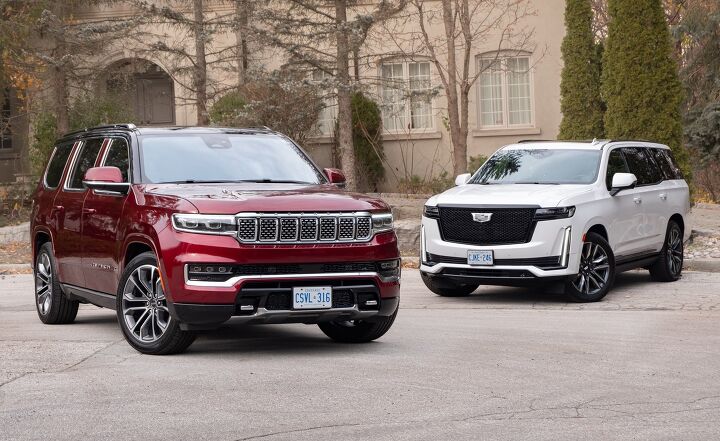
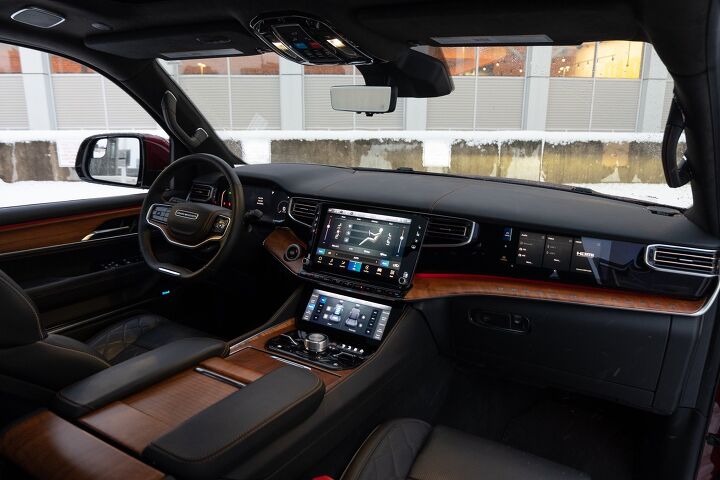





























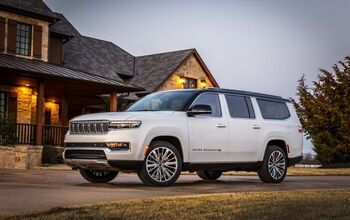
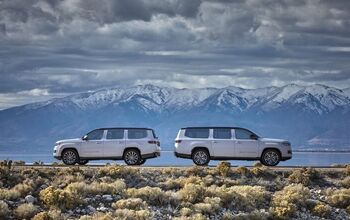
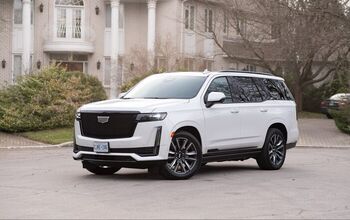
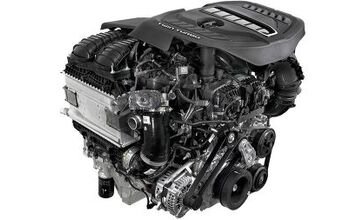
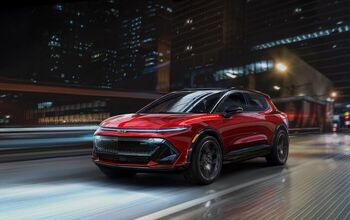












Comments
Join the conversation
You should had ask for the V8 for the Escalade if you were doing a comparison test. With the V8, the contest would had been a draw maybe.